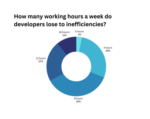
LinkedIn recently announced its decision to open source its Developer Productivity and Happiness (DPH) Framework.
The DPH Framework describes “the systems, processes, metrics, and feedback systems we use to understand our developers and their needs internally at LinkedIn,” Max Kanat-Alexander, principal staff software engineer at LinkedIn, and Grant Jenks, senior staff software engineer at LinkedIn, wrote in a blog post.
The Framework can be adapted by organizations looking to implement systems to improve productivity and developer satisfaction.
It describes the metrics LinkedIn follows, how it chose what to measure, and provides insights into why some metrics are better than others. For example, some of the metrics in place at LinkedIn include Developer Build Time, which is the time developers wait for their builds to finish; Net User Satisfaction, which measures how happy developers are with the internal tools they are using; and Code Reviewer Response Time, which measures how long it takes to a review to respond to code updates.
The DPH Framework also recommends creating Developer Personas to better understand developers by categorizing them into groups based on their workflows. This enables leaders to think about the priorities separately for each group.
There are also guidelines for teams who are creating feedback systems, and guidelines for quantitative metrics.
Finally, the Framework ends with a set of example metrics that companies can base theirs on.
“Now more than ever, developers are navigating so much change and new opportunity in this new era of Generative AI, so ensuring teams have the systems, processes, metrics and feedback systems to be successful is paramount. Our goal with this release was to offer an answer to one of the main questions we hear asked across the software industry, “How can I help my software development teams be more efficient, more effective, and happier?” We found that the best way to answer this question is through data, usually meaning metrics and feedback systems,” Kanat-Alexander and Jenks wrote.






